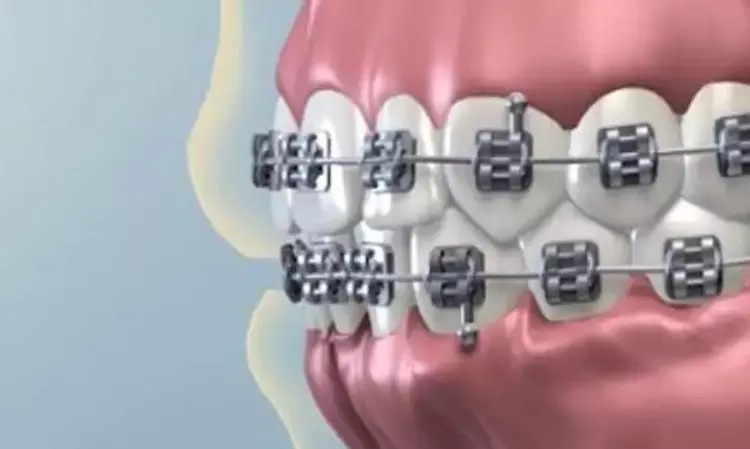- Home
- Medical news & Guidelines
- Anesthesiology
- Cardiology and CTVS
- Critical Care
- Dentistry
- Dermatology
- Diabetes and Endocrinology
- ENT
- Gastroenterology
- Medicine
- Nephrology
- Neurology
- Obstretics-Gynaecology
- Oncology
- Ophthalmology
- Orthopaedics
- Pediatrics-Neonatology
- Psychiatry
- Pulmonology
- Radiology
- Surgery
- Urology
- Laboratory Medicine
- Diet
- Nursing
- Paramedical
- Physiotherapy
- Health news
- Fact Check
- Bone Health Fact Check
- Brain Health Fact Check
- Cancer Related Fact Check
- Child Care Fact Check
- Dental and oral health fact check
- Diabetes and metabolic health fact check
- Diet and Nutrition Fact Check
- Eye and ENT Care Fact Check
- Fitness fact check
- Gut health fact check
- Heart health fact check
- Kidney health fact check
- Medical education fact check
- Men's health fact check
- Respiratory fact check
- Skin and hair care fact check
- Vaccine and Immunization fact check
- Women's health fact check
- AYUSH
- State News
- Andaman and Nicobar Islands
- Andhra Pradesh
- Arunachal Pradesh
- Assam
- Bihar
- Chandigarh
- Chattisgarh
- Dadra and Nagar Haveli
- Daman and Diu
- Delhi
- Goa
- Gujarat
- Haryana
- Himachal Pradesh
- Jammu & Kashmir
- Jharkhand
- Karnataka
- Kerala
- Ladakh
- Lakshadweep
- Madhya Pradesh
- Maharashtra
- Manipur
- Meghalaya
- Mizoram
- Nagaland
- Odisha
- Puducherry
- Punjab
- Rajasthan
- Sikkim
- Tamil Nadu
- Telangana
- Tripura
- Uttar Pradesh
- Uttrakhand
- West Bengal
- Medical Education
- Industry
Removable appliances with temperature sensors effective in orthodontic patients

Researchers from a recent study have observed that the use of microsensors as an objective measurement method enhances communication and boosts confidence in the orthodontist–patient relationship, according to a study published in the European Journal of Orthodontics.
Patient compliance during orthodontic treatment is one of the factors that most affects success in the final result. Removable appliances work by simple tipping movements of the crowns of the teeth about a fulcrum close to the middle of the tooth. They also allow differential eruption of teeth, for example by using bite planes. They differ from fixed appliances, which are capable of complex movements of multiple teeth, including bodily movement, root torque and rotation. The use of removable appliances is frequent at an early age and the monitoring of its use is essential to assess the collaboration of the patient.
Hence, Antonio Moreno-Fernández and colleagues from the Stomatology Department, University of Valencia, Spain conducted the present research with the objective to establish the effectiveness of microsensors included in removable appliances during orthodontic treatment or in the retention phase to enable a reliable and individualized follow-up of the patient.
The authors included studies using microsensors into removable appliances with the key selection criterion of a minimum follow-up of 4 weeks. The quality of the studies included was evaluated using the Cochrane scale for the randomized controlled trials and the Newcastle Ottawa Scale for control–case, cohort, and transversal studies. The mean of the differences with a 95% confidence interval was expressed for the continuous data.
The results showed that twenty-nine full-text articles were analysed and included in the qualitative synthesis. In general, the mean daily wear time of removable appliances measured objectively was less than the time that the professional had predetermined.
Therefore, the authors concluded that "the use of microsensors as an objective measurement method enhances communication and boosts confidence in the orthodontist–patient relationship. More random clinical studies with temperature sensors are needed to establish to what extent they influence the orthodontic outcome."
Dr. Nandita Mohan is a practicing pediatric dentist with more than 5 years of clinical work experience. Along with this, she is equally interested in keeping herself up to date about the latest developments in the field of medicine and dentistry which is the driving force for her to be in association with Medical Dialogues. She also has her name attached with many publications; both national and international. She has pursued her BDS from Rajiv Gandhi University of Health Sciences, Bangalore and later went to enter her dream specialty (MDS) in the Department of Pedodontics and Preventive Dentistry from Pt. B.D. Sharma University of Health Sciences. Through all the years of experience, her core interest in learning something new has never stopped. She can be contacted at editorial@medicaldialogues.in. Contact no. 011-43720751
Dr Kamal Kant Kohli-MBBS, DTCD- a chest specialist with more than 30 years of practice and a flair for writing clinical articles, Dr Kamal Kant Kohli joined Medical Dialogues as a Chief Editor of Medical News. Besides writing articles, as an editor, he proofreads and verifies all the medical content published on Medical Dialogues including those coming from journals, studies,medical conferences,guidelines etc. Email: drkohli@medicaldialogues.in. Contact no. 011-43720751


